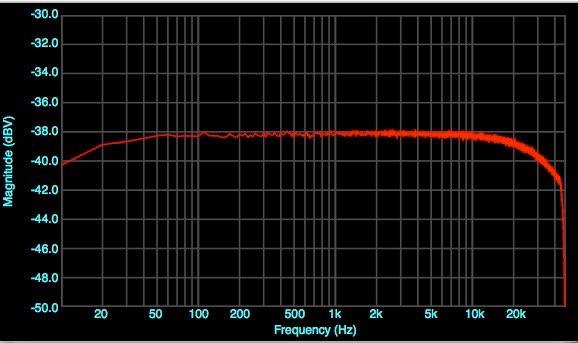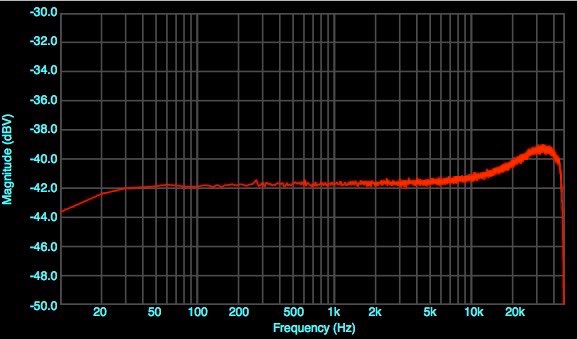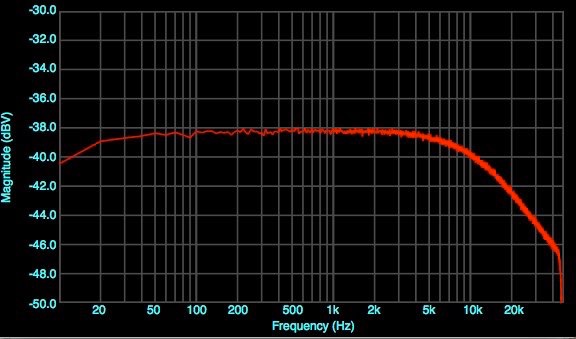More on the Sure 4-Channel T-Amp

Measuring a Sure Class-D Amplifier Board
Thursday, August 31, 2017

I became curious about the actual performance of the Sure “4 Channel 100 Watt” amplifier boards I bought a few years ago. There have been some reviews online with measurements of other class-D amplifiers from China, and I wondered how this one stacks up. I also wondered how the class-D output filter chokes and capacitors affect performance. Since the loudspeaker, its inductance, resistance, and capacitance are a major part of the output network, it would seem from theory that you would need to customize the value of the chokes, caps, and resistors on the amp board to match the speaker you use. Turns out, the effects are measurable, and certainly account for some of the difference in sound of class-D versus class-A and class-AB amplifiers. It’s perhaps telling that the data sheets of many class-D chips include lots of graphs with the exception of frequency response, which is after all one of the most basic specs for any amplifier.
Measuring the output of a BTL amp like this where neither + or - speaker terminal is at ground potential for either AC or DC poses a problem for many meters with ground referenced inputs. I do most of my measuring using a TASCAM USB interface to a Mac which runs the Electro-Acoustic Toolbox suite of measuring tools. The microphone inputs on the TASCAM are balanced, and are isolated from DC, so they can be used. An attenuator is needed to prevent overloading the mic inputs, so I made one up from a pair of 20K resistors and a 2K resistor to cut the input level by about 20:1.
I hooked my “spare” amp board to a 28VDC 350 watt switching power supply. The output power of a class-D amp is largely determined by the power supply voltage, and this amp is rated for 30V maximum, so 28V is safe and gives near the maximum power it’s capable of.
OK, so what did we find?
First, power output. The power rating of this sort of amplifier is always to be taken with a grain of salt. Maximum output before visible clipping on the oscilloscope is 40.5 watts @ 8 ohms, and 76.6 watts at 4 ohms. That’s actually better than some competitive “100 W” amps.
With an 8 ohm resistive load, THD at 1 watt is 0.08%, and at 32 watts it’s 0.62%. That’s pretty good, well within “hifi” category specs. Especially the 1 watt measurement, which is the most important, since the vast majority of listening is done at levels under a watt.
With a 4 ohm load, THD at 1watt is 0.19%, at 25 watts it’s 0.85%, and at 76.6 watts, it’s 1.26%.
Now the interesting part - frequency response. That turns out to depend on the load impedance.
Finally got around to making some measurements on the Sure Electronics 4 x 100 W amplifier kit. It throws a bit of light on “T-Amps” and other class D amplifiers.

Frequency response at 4 ohms, 1 watt. Less than 1dB down at 20 and 20K Hz. Not ruler-flat like a top shelf class-AB amplifier - a bit reminiscent of a mid-fi 1960s tube amp.

Frequency response at 4 ohms, 25 watts. Essentially the same as 1 watt. Good; response doesn’t get worse as power increases.

Frequency response at 8 ohms, 1 watt. Whoa... the extreme top rises, instead of falls. Looks as if the output chokes were chosen for a compromise impedance of around 6 ohms. Interesting...

Frequency response at 2 ohms, 1 watt. Uh huh... the top end falls off more than twice as fast as at 4 ohms. Just what you’d expect as the inductive reactance becomes larger with respect to the load impedance.
The conclusion is that switching amps have an inherent problem in the output filter. A choke and capacitor filter the high switching frequency out of the speaker outputs. The choke has to be selected to match the speaker’s impedance. An LC filter depends on the load for damping, so Q varies with load impedance. Chokes saturate, and inductance varies with current below saturation, leading to distortion. Capacitors, especially ceramics, change capacity as voltage varies, again contributing distortion. What happens with a real “8 ohm” speaker whose measured impedance ranges from 6 to 45 ohms over the 20 - 20,000 Hz audio band? This amp sounded very unhappy on my Quad electrostatics for example.
These and other chips take feedback from the “digital” side of the output filter. Taking feedback directly at the speaker terminals could correct for the filter, but delays and phase shifts make that impossible, at least at the current state of the art.
In all, T-Amp chips come off well with typical speakers. Lotsa watts per dollar, commendably low distortion, and decent frequency response. Easy to listen to, if not up there with the best class-A and AB amps available. The switching frequency is higher than all but the very latest chips, which helps keep modulation and filter distortion low.
For an excellent technical analysis of Class-D output filters, see the TI website here:
http://www.ti.com/lit/an/slaa701a/slaa701a.pdf
Too bad Tripath is out of business and the supply of chips is drying up.

